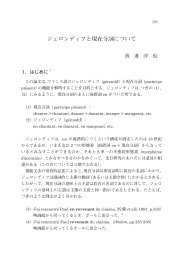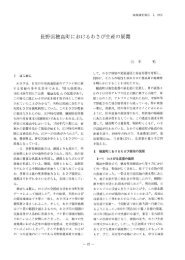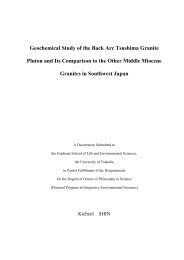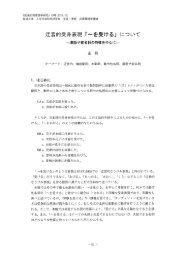Gamma Rays and CarbonIon-Beams Irradiation for Mutation ...
Gamma Rays and CarbonIon-Beams Irradiation for Mutation ...
Gamma Rays and CarbonIon-Beams Irradiation for Mutation ...
You also want an ePaper? Increase the reach of your titles
YUMPU automatically turns print PDFs into web optimized ePapers that Google loves.
Although it is now found only in Australia, Taiwan, South Africa <strong>and</strong> the<br />
Canary Isl<strong>and</strong>s, the soil-borne fungus is spreading rapidly. Race 4 is a killer<br />
disease that wipes out crops completely <strong>and</strong> cannot be controlled by<br />
existing fungicides. The only counter measure is genetic resistance (Hibler<br />
<strong>and</strong> Hardy, 1998).<br />
Banana Bunchy Top Virus (BBTV) is one of the most serious<br />
diseases of banana. Once established, it is extremely difficult to eradicate<br />
or manage. BBTV is widespread in Southeast Asia, the Philippines, Taiwan,<br />
most of the South Pacific isl<strong>and</strong>s, <strong>and</strong> parts of India <strong>and</strong> Africa. BBTV<br />
does not occur in Central or South America. The virus is spread from plant<br />
to plant by aphids <strong>and</strong> from place to place by people transporting planting<br />
materials obtained from infected plants. So far, there is no cure <strong>for</strong> BBTV.<br />
Some banana varieties, like the ‘Cavendish’ types, are more readily<br />
infected by the virus, but no varieties of banana are resistant. Banana plants<br />
with symptoms rarely bear fruit, <strong>and</strong> because they are reservoirs of the<br />
virus, must be destroyed. The most important factors controlling banana<br />
bunchy top virus are to kill the aphid vector (disease carrier) <strong>and</strong> to rough<br />
(removing <strong>and</strong> destroying) infected banana plants (CTAHR, 1997).<br />
BBTV infected plants with advanced symptoms have a rosetted<br />
appearance with narrow, upright <strong>and</strong> progressively shorter leaves, giving<br />
rise to the common name “bunchy top”. The leaf edges often roll upwards<br />
<strong>and</strong> show a marginal yellowing. Dark green streaks are often found on the<br />
midrib <strong>and</strong> petiole, extending downwards into the pseudostem. The most<br />
diagnostic symptoms are short dark green dots <strong>and</strong> dashes along the minor<br />
leaf veins, which <strong>for</strong>m hooks as they enter the edge of the midrib (Thomas<br />
et al., 1994).<br />
Burrowing nematode (Radopholus similis) is among of the most<br />
destructive root pathogens which attacking bananas in tropical production<br />
zone. Vegetative propagation using infested corms or suckers has<br />
6

















